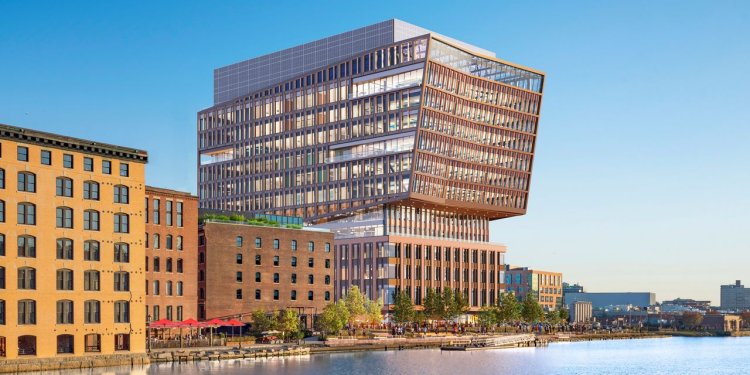Life-Sciences Property Sector Cools After Multiyear Winning Streak
A rendering of 15 Necco St. in Boston, which has been leased by pharmaceutical company Eli Lilly. Photo: Alexandria Real Estate Equities By Peter Grant May 2, 2023 8:00 am ET The market for office and lab space, one of the hottest commercial-property sectors in recent years, is now the latest one to come under stress. The sector became an investor favorite during the pandemic as companies raced to develop a Covid-19 vaccine. Unlike traditional office space, life-sciences buildings are less vulnerable to the remote-work movement. Lab work usually requires specialized equipment and mechanical systems that can’t be replicated at home. But a deluge of new supply is putting pressure on some of the largest industry hubs in the country including San Diego, south San Francisco and the Bo


A rendering of 15 Necco St. in Boston, which has been leased by pharmaceutical company Eli Lilly.
Photo: Alexandria Real Estate Equities
By
The market for office and lab space, one of the hottest commercial-property sectors in recent years, is now the latest one to come under stress.
The sector became an investor favorite during the pandemic as companies raced to develop a Covid-19 vaccine. Unlike traditional office space, life-sciences buildings are less vulnerable to the remote-work movement. Lab work usually requires specialized equipment and mechanical systems that can’t be replicated at home.
But a deluge of new supply is putting pressure on some of the largest industry hubs in the country including San Diego, south San Francisco and the Boston-Cambridge region, causing vacancies to rise, according to commercial real-estate-services firm CBRE Group.
Biotech companies have also been forced to moderate their growth plans because the capital markets have dried up. Many of these firms aren’t profitable and need funding for growth from initial public offerings, new stock issues, venture-capital firms and borrowing.
These funding sources are eroding due to higher interest rates and recession concerns. Biotech companies have laid off thousands of workers and shares of publicly traded biotech stocks have plunged.
Startups that aren’t making a profit “have a shorter fuse on capital,” said John Pawlowski, an analyst with Green Street. “The IPO market has been shut for a while.”
Not all the news is bad. Demand for life-sciences buildings remains strong from pharmaceutical companies. Average life-sciences rents were about $65 a square foot in the first quarter of 2023, up from about $40 in the first quarter of 2020, according to CBRE.
Yet with fewer startups seeking space, vacancy rates are moving higher. In San Diego, the vacancy rate rose to 5.6% in the first quarter compared with 3% a year ago, according to CBRE. The vacancy rate for the Boston area was nearly five times higher than a year ago at 3.4%, and in San Francisco it ticked up to 8.4% from 5.9%.
The weakening performance is another sign that even the more favored commercial real-estate sectors are now feeling the brunt of higher interest rates and economic concerns.

A rendering of the Bristol-Myers Squibb expansion in Alexandria’s Campus Point San Diego mega campus.
Photo: Alexandria Real Estate Equities
Shares of
Inc.,
Investors saw the bank’s failure as another sign that credit was becoming tighter, while the cost of debt is increasing, he said. The mood was much more buoyant in the early years of the pandemic when tens of billions of dollars poured into medical research and demand for new space reached record levels. Developers launched new projects in the major life-sciences hubs, and other markets began to grow in cities such as Philadelphia and Boulder, Colo. Alexandria’s total returns, including dividends and share price appreciation, were about 110% over a three-year period ending 2021, according to Green Street. “The globe was focused on this sector,” said
Matthew Weir,
president of Elevate Research Properties, which has three life-sciences developments with close to 1 million square feet under way in Manhattan. But much of that new supply will be hitting the market as biotech demand is cooling. CBRE projects there will be 220 million square feet of life-sciences space by 2025, up from 180 million square feet at the end of 2022. “The industry was on an unsustainable path,” said
Responding to marketplace uncertainty and volatility, Alexandria said in April that it had reduced construction spending by $250 million by pausing or delaying several projects. For example, Alexandria closed down one project in Research Triangle Park in North Carolina because several tenants in a project the company completed during the pandemic said they weren’t ready to “pull the trigger” on expansion plans, said
Joel Marcus,
Write to Peter Grant at [email protected]
What's Your Reaction?






















